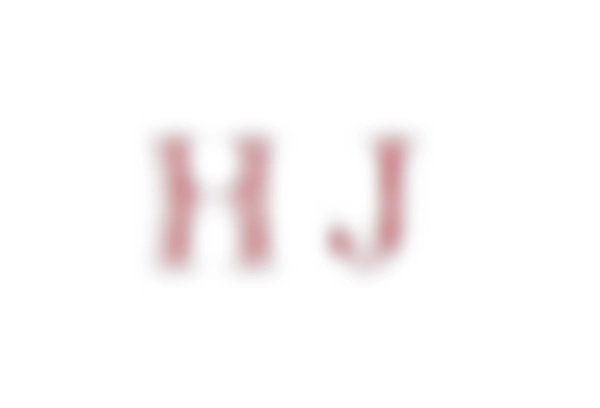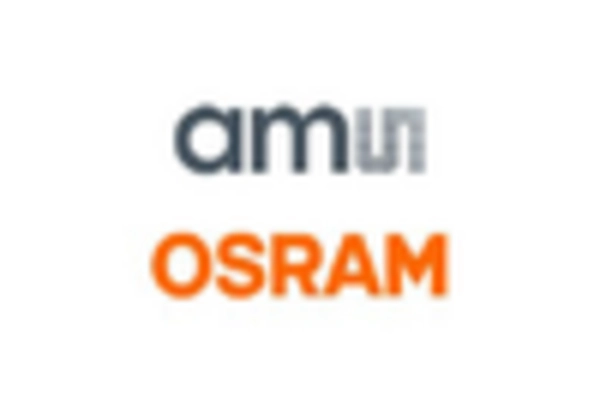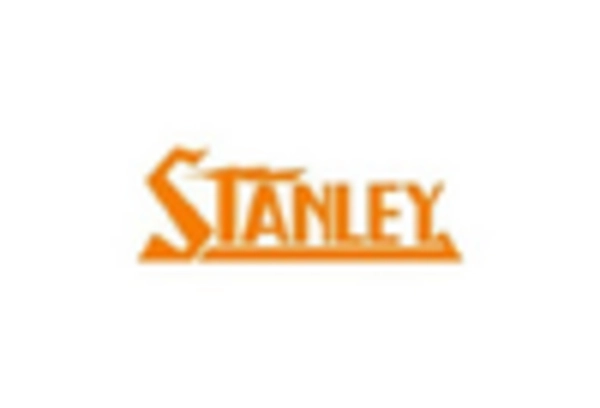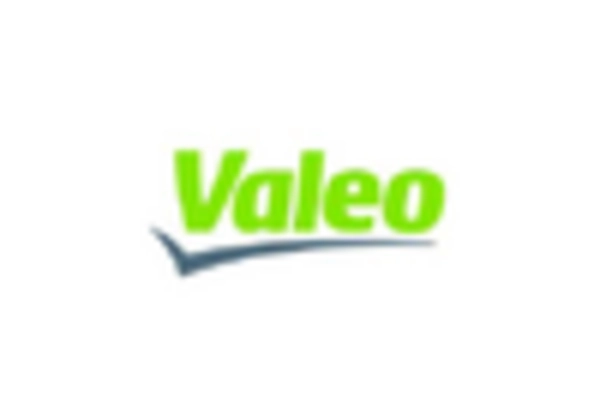Rising Awareness of Road Safety
There is a growing awareness of road safety among consumers, which is influencing the headlight market. As accidents related to poor visibility continue to be a concern, consumers are increasingly prioritizing safety features in their vehicle purchases. This trend is reflected in the rising demand for headlights that offer superior illumination and adaptive capabilities. Market Research Future indicates that nearly 40% of consumers consider advanced headlight systems a critical factor when selecting a vehicle. As a result, manufacturers are likely to focus on developing headlights that not only meet safety standards but also provide enhanced visibility in various driving conditions, thereby addressing consumer concerns and driving market growth.
Regulatory Changes and Standards
Regulatory changes play a crucial role in shaping the headlight market. In the US, stringent regulations regarding vehicle safety and emissions are prompting manufacturers to innovate and comply with new standards. For instance, the National Highway Traffic Safety Administration (NHTSA) has implemented guidelines that require improved visibility and reduced glare from headlights. These regulations are expected to drive the adoption of advanced lighting technologies, such as adaptive headlights, which adjust their beam patterns based on driving conditions. As a result, the headlight market is likely to witness a shift towards products that not only meet regulatory requirements but also enhance overall road safety.
Consumer Preferences for Customization
Consumer preferences are evolving, with an increasing demand for personalized vehicle features, including headlights. The headlight market is responding to this trend by offering customizable options that allow consumers to select different styles, colors, and functionalities. This shift is particularly evident among younger consumers who seek to express their individuality through their vehicles. Market data suggests that approximately 30% of consumers are willing to pay a premium for customized lighting solutions. As manufacturers recognize this trend, they are likely to expand their product lines to include a variety of headlight designs, thereby catering to the diverse tastes of consumers and enhancing market competitiveness.
Growth of Electric and Hybrid Vehicles
The rise of electric and hybrid vehicles is significantly impacting the headlight market. As these vehicles become more prevalent, there is a corresponding demand for advanced lighting solutions that complement their eco-friendly attributes. Electric vehicles (EVs) often feature innovative headlight designs that enhance aerodynamics and energy efficiency. In 2025, it is projected that the market for headlights specifically designed for EVs will grow by over 25%. This growth is driven by the need for energy-efficient lighting that aligns with the sustainability goals of EV manufacturers. Consequently, the headlight market is likely to see increased collaboration between lighting manufacturers and automotive companies to develop tailored solutions for this expanding segment.
Technological Advancements in Lighting
The headlight market is experiencing a notable transformation due to rapid technological advancements. Innovations such as LED and laser lighting technologies are becoming increasingly prevalent, offering enhanced visibility and energy efficiency. In 2025, it is estimated that LED headlights will account for over 60% of the market share, driven by their longer lifespan and lower energy consumption. This shift not only improves safety for drivers but also aligns with environmental sustainability goals. As manufacturers invest in research and development, the headlight market is likely to see a surge in new products that incorporate these advanced technologies, thereby attracting consumers who prioritize performance and efficiency.

















Leave a Comment